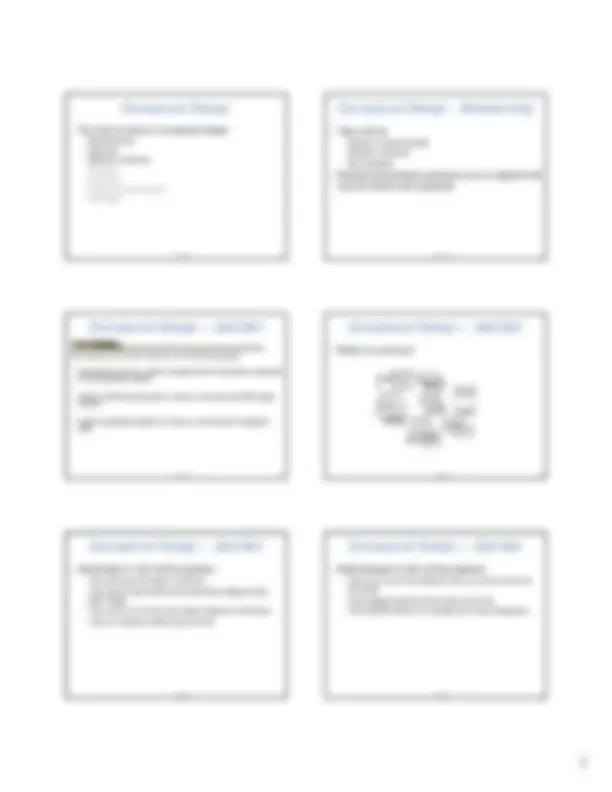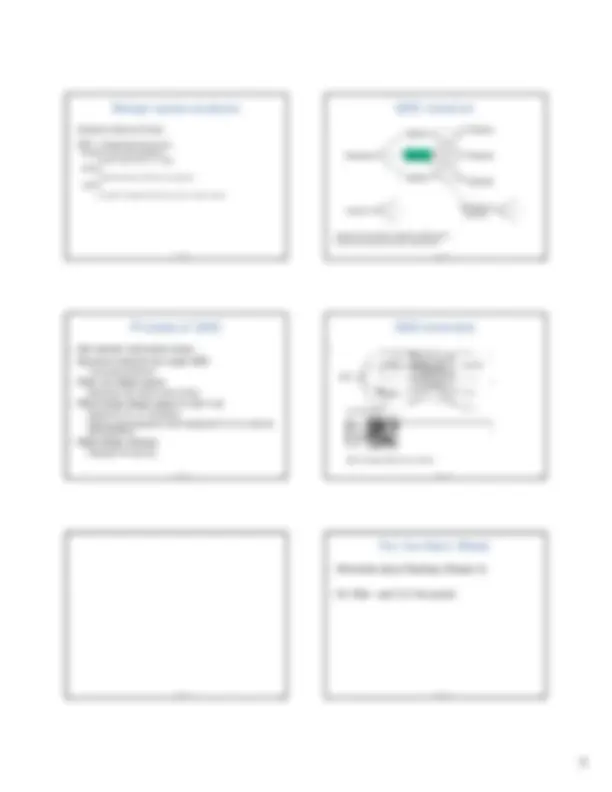





Study with the several resources on Docsity

Earn points by helping other students or get them with a premium plan


Prepare for your exams
Study with the several resources on Docsity

Earn points to download
Earn points by helping other students or get them with a premium plan
Community
Ask the community for help and clear up your study doubts
Discover the best universities in your country according to Docsity users
Free resources
Download our free guides on studying techniques, anxiety management strategies, and thesis advice from Docsity tutors
An overview of the iterative interface design process in the context of human-computer interaction (hci). The process includes stages such as discovery, conceptual design, evaluation, and physical design. Conceptual design involves structuring the information space, creating alternative solutions, and determining which design concept to pursue. Tools like brainstorming, card sorting, semantic networks, personas, scenarios, and cognitive walkthroughs are used in the conceptual design phase. Evaluation is an ongoing process that determines the relative merits of one design over another and measures the success of a proposed design.
Typology: Study notes
1 / 5

This page cannot be seen from the preview
Don't miss anything!




Design
http://www.scils.rutgers.edu/~jacekg/teaching/
Some Slides Copyright © Jacek Gwizdka; Some Copyright © 2008 Pearson Education, Inc. Publishing as Pearson Addison-Wesley (^) ITI 230 – HCI (^2)
Review
ITI 230 – HCI 3
Iterative Interface Design Process
Design
Evaluation
Discovery
“Understanding Humans”
ITI 230 – HCI 4
Iterative Interface Design Process
Conceptual Design
Evaluation Prototype & Implement
Discovery
Physical Design
“Understanding Humans” Collect & Interpret Æ Requirements
ITI 230 – HCI (^5)
The Design Process Model
ITI 230 – HCI (^6)
The Design Process Model
ITI 230 – HCI (^7)
The Design Process Model
ITI 230 – HCI (^8)
Conceptual Design
ITI 230 – HCI 9
Technology Myopia
Integrate technology and human activities carefully
ITI 230 – HCI 10
Conceptual Design
ITI 230 – HCI (^11)
Conceptual Design
A. Is there an appropriate interface metaphor? B. Which interaction style? C. Is there an interface type that could be used?
ITI 230 – HCI (^12)
ITI 230 – HCI (^19)
Conceptual Design – Semantic
Network
ITI 230 – HCI (^20)
Conceptual Design – Semantic
Network
ITI 230 – HCI 21
Conceptual Design – Semantic
Network
ITI 230 – HCI 22
Scenarios afford a rich picture of the user’s tasks
ITI 230 – HCI (^23)
ITI 230 – HCI (^24)
ITI 230 – HCI (^25)
Design space analysis
ITI 230 – HCI (^26)
QOC notation
Question
Option
Option
Option
Criterion
Criterion
Criterion
Question …^ ConsequentQuestion …
ITI 230 – HCI 27
Process of QOC
ITI 230 – HCI 28
QOC example
Matrix between Option and Criteria
ITI 230 – HCI 29 ITI 230 – HCI (^30)
For the Next Week